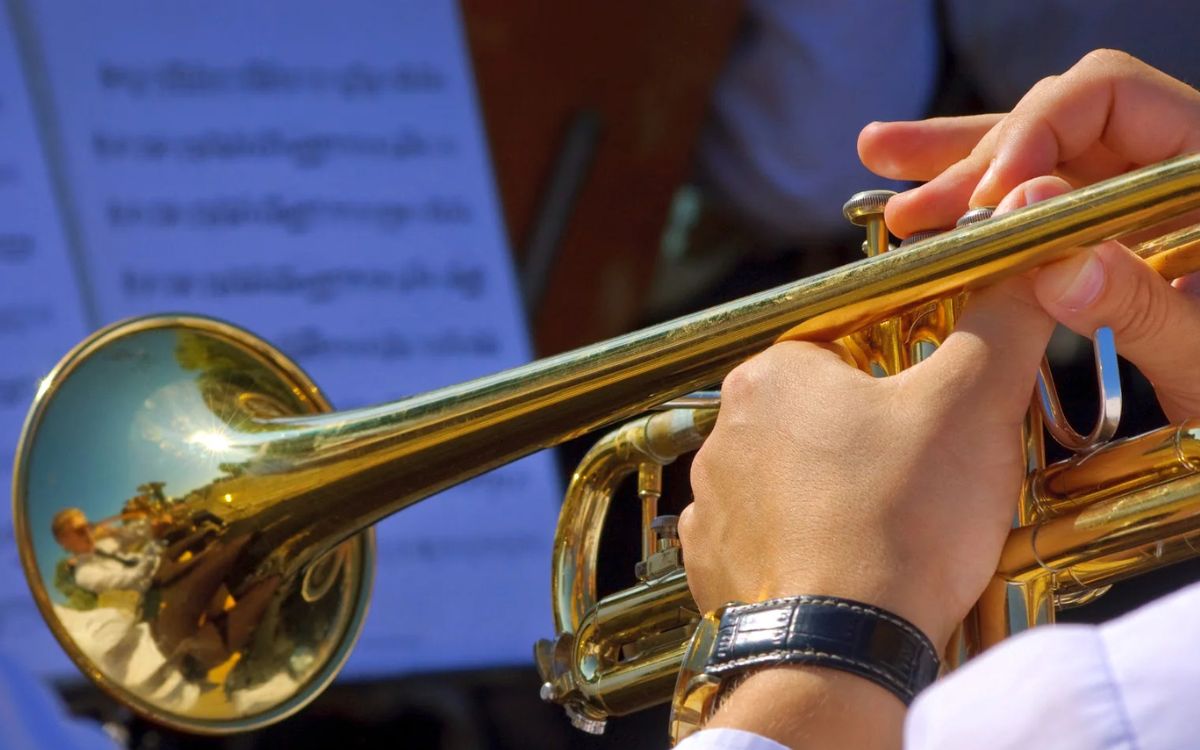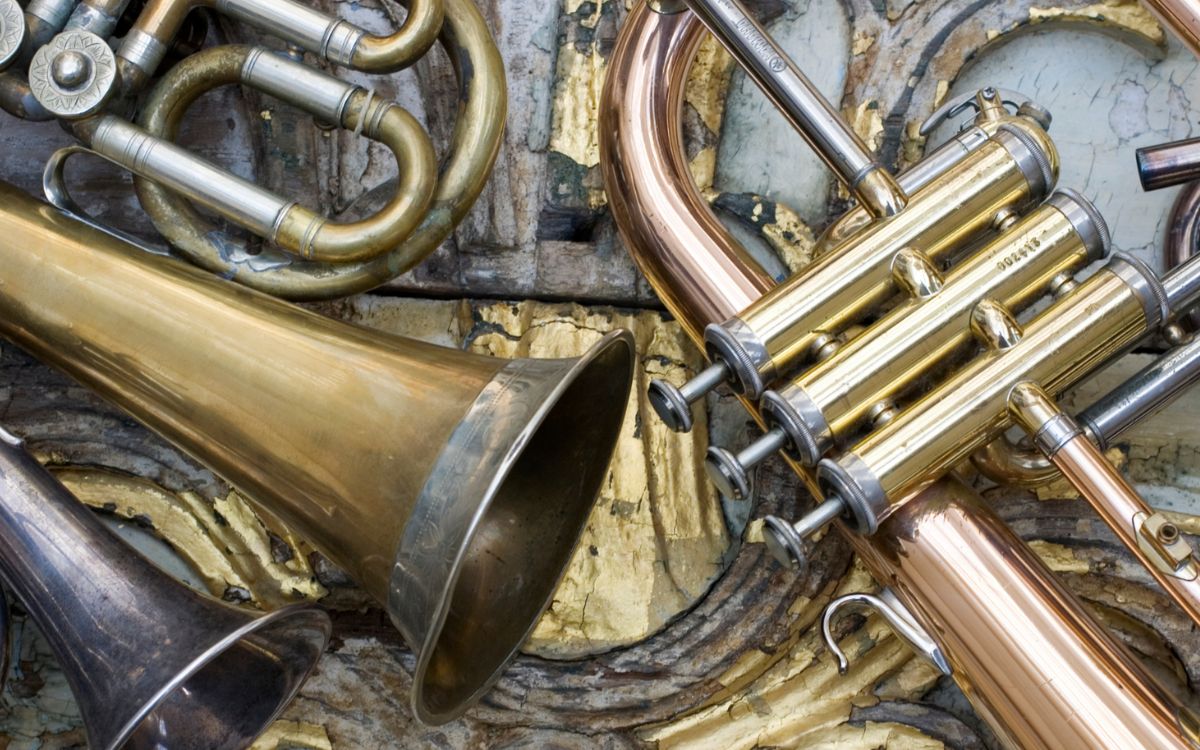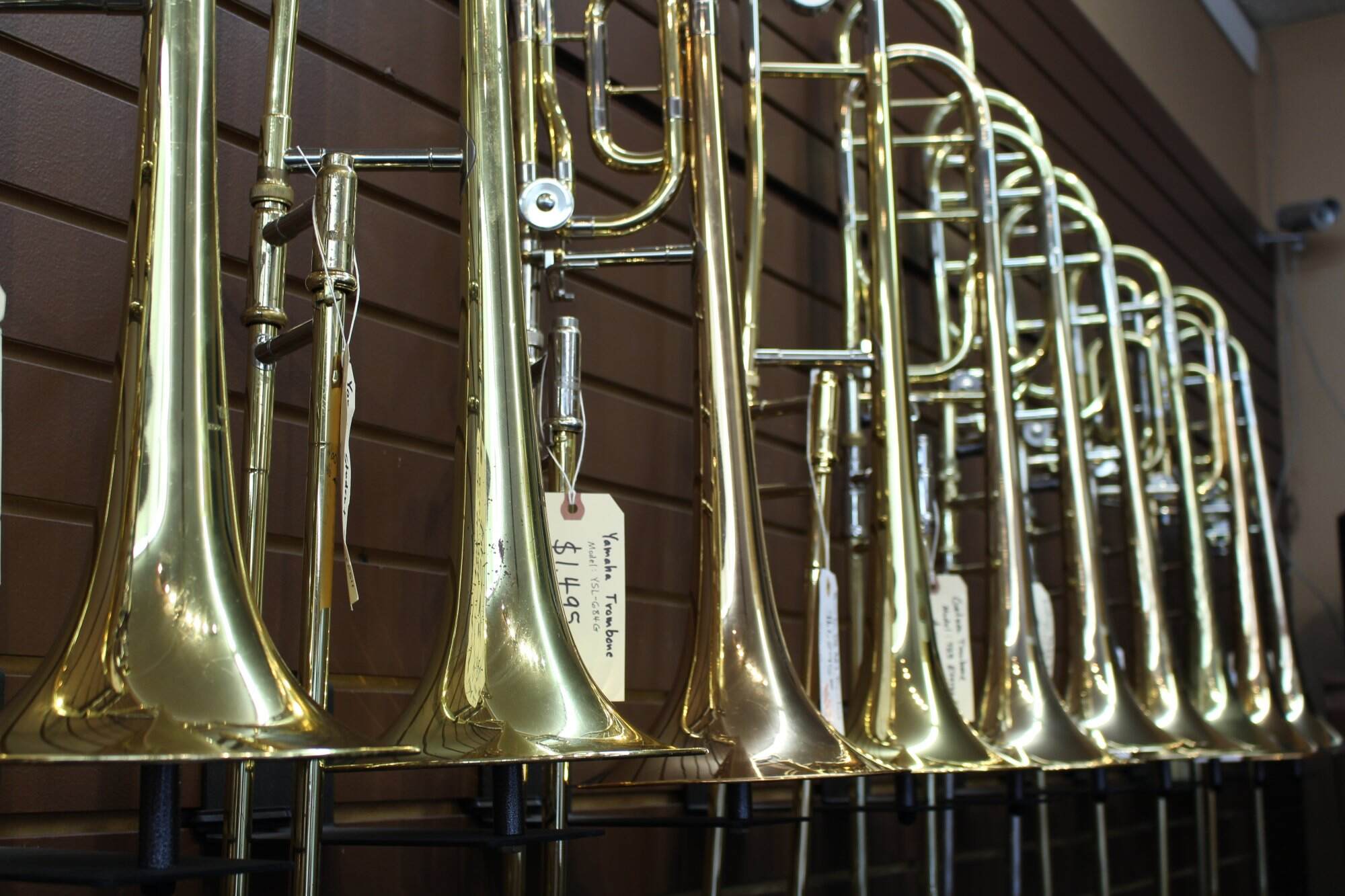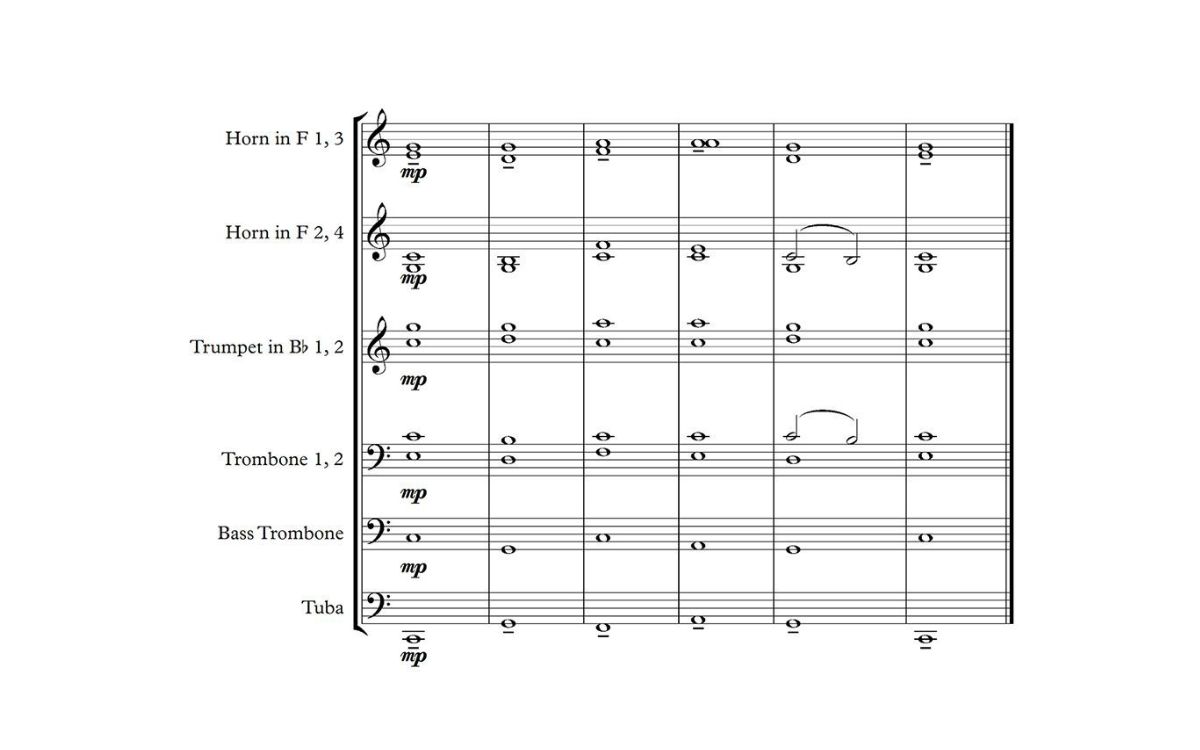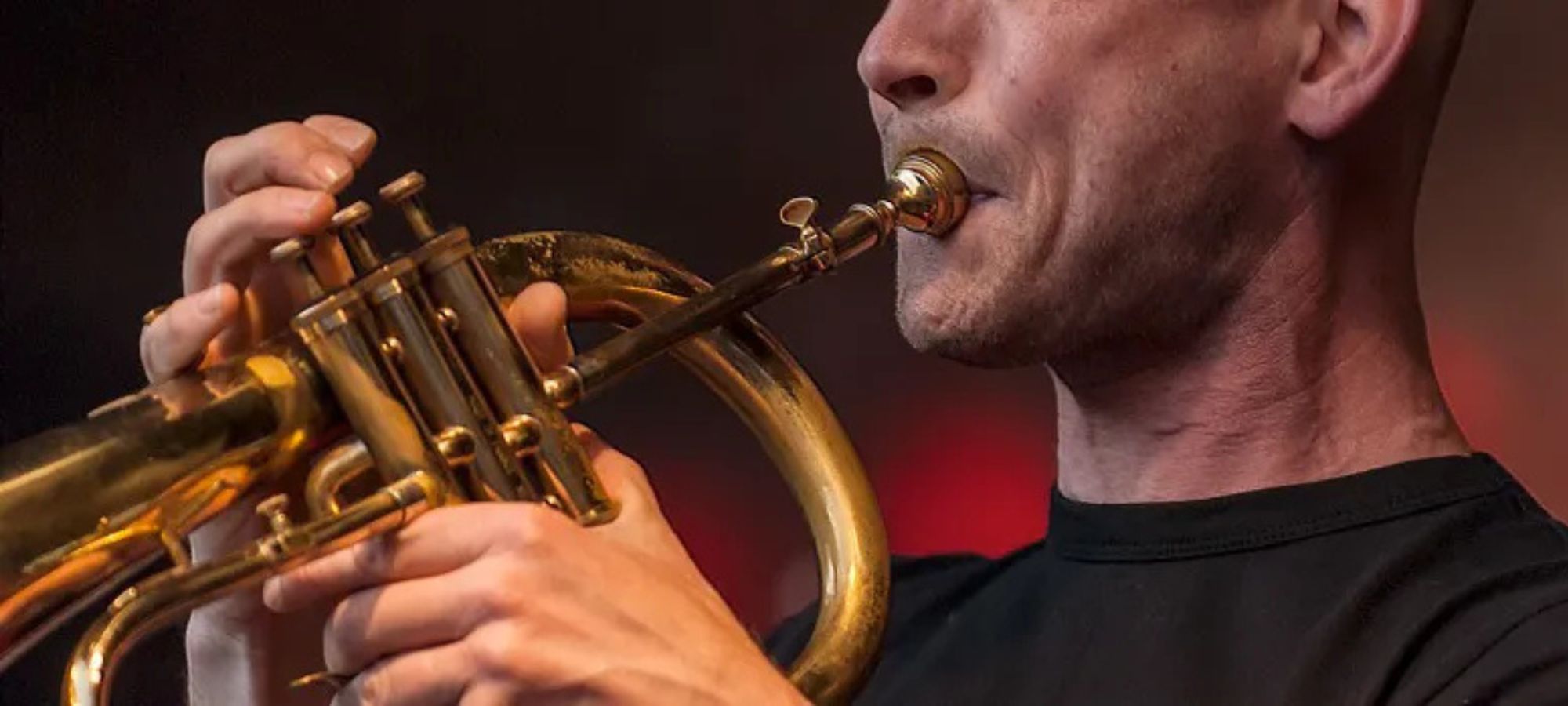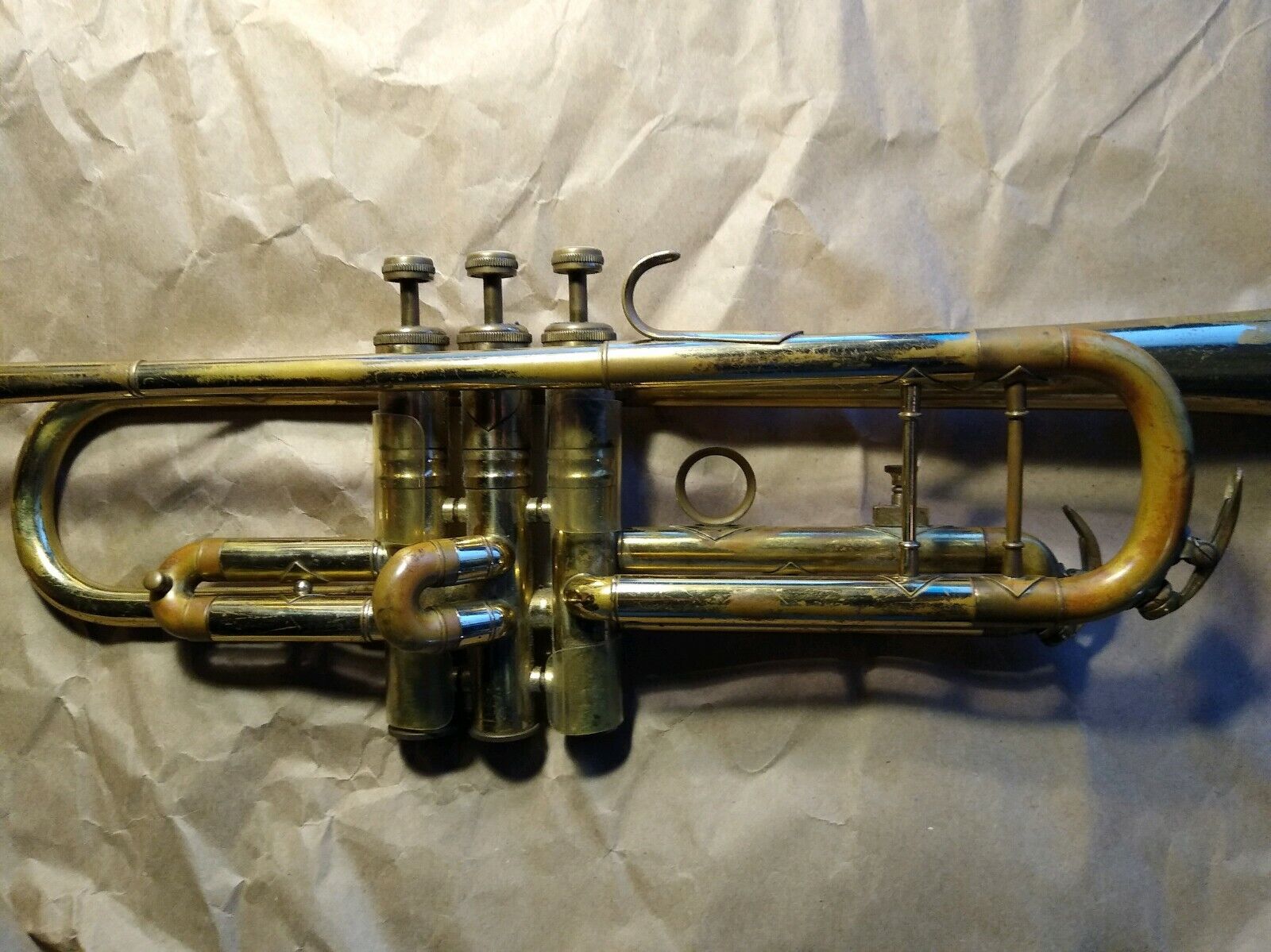Home>Instruments>Brass Instruments>By What Year Had Valves Become Standard On Brass Instruments?
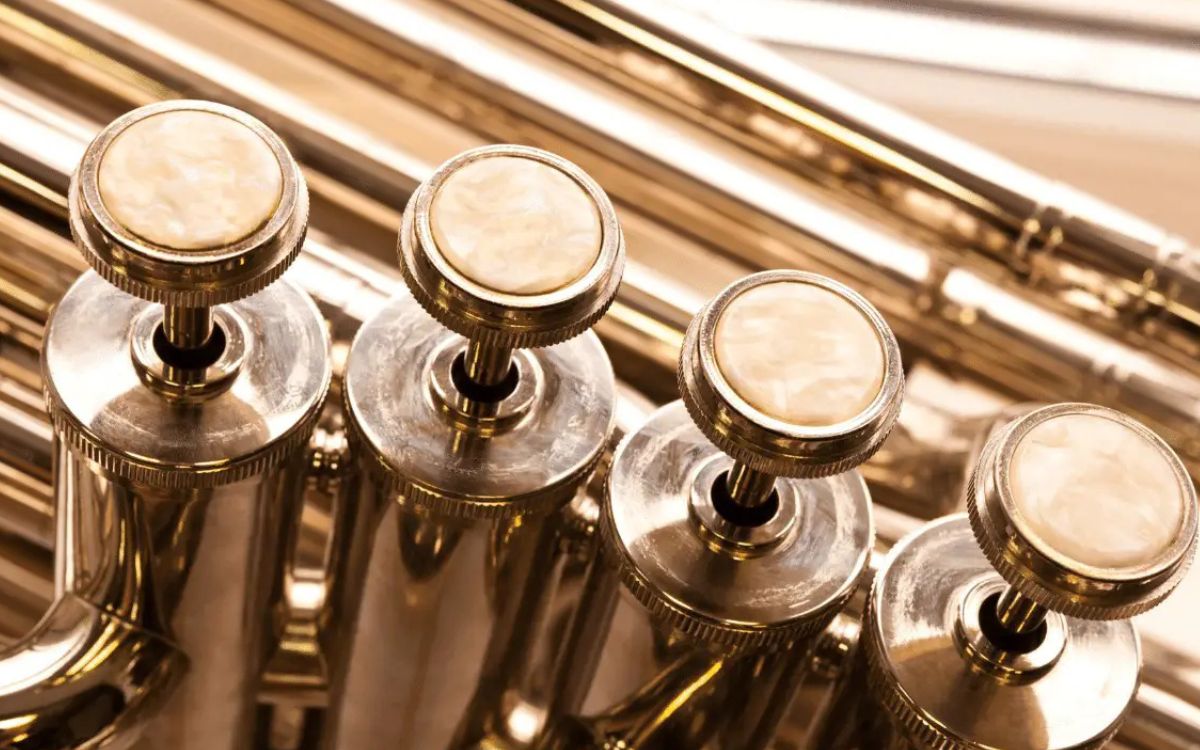

Brass Instruments
By What Year Had Valves Become Standard On Brass Instruments?
Published: January 15, 2024
Discover the timeline of brass instruments evolution, including when valves became standard. Explore the rich history of brass instruments and their innovations.
(Many of the links in this article redirect to a specific reviewed product. Your purchase of these products through affiliate links helps to generate commission for AudioLover.com, at no extra cost. Learn more)
Table of Contents
Introduction
Brass instruments have a rich history that spans several centuries. From the majestic sound of the trumpet to the thunderous notes produced by the tuba, these instruments have played a vital role in countless musical compositions and performances. But have you ever wondered how brass instruments evolved to incorporate valves, which are now a standard feature on most modern brass instruments?
Valves are an essential part of brass instruments, allowing players to change the pitch and create a wider range of tones. Before valves were introduced, brass instruments relied on various techniques, such as hand-stopping and the use of different crooks, to achieve different pitches. However, these techniques had limitations and were not as efficient or versatile as valves.
In this article, we will explore the early developments of brass instruments, the emergence of valves, their adoption and evolution, as well as the key innovators who played a pivotal role in their development. We will also delve into how valves eventually became standard on brass instruments, revolutionizing the way musicians play and pushing the boundaries of what was once possible.
So, join us as we embark on a journey through time to discover how valves became an integral part of brass instruments, transforming their sound and expanding their range of musical possibilities.
Early Developments of Brass Instruments
The origins of brass instruments can be traced back to ancient civilizations such as the Egyptians and the Greeks, who developed rudimentary horn-like instruments made from animal horns or shells. These early instruments were used for signaling and communication purposes rather than musical performances.
It wasn’t until the Middle Ages that brass instruments started to evolve into what we recognize today. During this time, craftsmen began to experiment with different materials like brass and copper, shaping them into curved tubes with flared ends. These early brass instruments included the sackbut (a precursor to the trombone), the cornetto (similar to a trumpet), and early forms of the trumpet and horn.
Although these early brass instruments relied on the player’s embouchure (lip position and control) and the length of the tubing to produce different pitches, they were limited in their range and tonal possibilities. The absence of valves, which allow for easy manipulation of pitch, meant that these instruments had a limited number of notes and were often used in military and ceremonial contexts.
As musical styles and demands changed, there was a need for brass instruments that could produce a wider range of tones and adapt to various musical settings. This led to the development of key systems, which involved adding holes and tone-producing mechanisms to the instrument’s tubing. Key systems were primarily used in instruments like the trombone, where the player could extend the slide to access different pitches.
However, the invention of valves in the early 19th century would revolutionize the sound and capabilities of brass instruments forever.
Stay tuned as we dive into the emergence of valves in brass instruments and how they forever changed the landscape of music.
The Emergence of Valves in Brass Instruments
In the early 19th century, the development of valves brought about a significant breakthrough in the world of brass instruments. Valves offered a revolutionary way to change the pitch of brass instruments, opening up a whole new realm of musical possibilities.
One of the earliest valve systems was the piston valve, which was invented by Heinrich Stölzel and Friedrich Blühmel in Germany in the early 1820s. The piston valve consisted of a cylindrical casing and a piston that could be pressed down to redirect the airflow through different lengths of tubing, effectively altering the pitch of the instrument.
The adoption of piston valves in brass instruments was a game-changer. It allowed players to easily and quickly change the pitch with the press of a finger, expanding the range and versatility of the instrument. This innovation paved the way for the development of new brass instruments such as the valved trumpet, cornet, and euphonium.
Another important valve system that emerged during this time was the rotary valve. Invented by Joseph Riedl in Vienna in the 1830s, the rotary valve consisted of a rotating cylinder with holes that aligned with different sections of tubing when turned. This design allowed for a smooth and seamless transition between notes.
The adoption of valve technology in brass instruments was initially met with mixed reactions. Some musicians embraced the newfound flexibility and expressiveness that valves provided, while others were skeptical of deviating from traditional techniques. However, the advantages of valves were undeniable, and over time, their benefits became more widely recognized.
As the popularity of valved brass instruments grew, advancements in valve design continued. Different variations of piston and rotary valves were developed, each with its own unique characteristics and strengths. These innovations further expanded the capabilities of brass instruments and opened up new possibilities for composers, performers, and musical genres.
With valves, brass instruments were no longer limited to a fixed set of notes. Musicians could explore a wider range of pitches, play fast passages more smoothly, and produce a greater variety of expressive tones. This transformation in sound and technique revolutionized the role of brass instruments in orchestras, bands, and ensembles.
But who were the key innovators behind the development of valves? Join us in the next section as we uncover the individuals who played a pivotal role in shaping the evolution of valves on brass instruments.
Adoption and Evolution of Valves on Brass Instruments
After the initial emergence of valves in brass instruments, their adoption and subsequent evolution took place over several decades. As musicians and instrument makers recognized the advantages that valves offered, they began to incorporate them into a wide range of brass instruments.
At first, valves were primarily added to instruments like the trumpet and cornet, which were known for their powerful and agile qualities. The addition of valves allowed these instruments to play chromatically, meaning they could produce all the notes in the Western musical scale. This versatility made them more suitable for playing complex melodies and joining other instruments in orchestras and ensembles.
As the demand for valved instruments increased, instrument makers started to experiment with different valve configurations. The most common valve systems that emerged were the piston and rotary valves.
Piston valves, with their simple and efficient design, became popular among instrument makers in countries like Germany and the United States. They were widely used in instruments like the trumpet, cornet, and euphonium, and their operation involved pressing down on a valve button to redirect the airflow through additional lengths of tubing.
On the other hand, rotary valves, with their smooth and continuous airflow, gained popularity in countries like Austria and France. Instruments such as the French horn and tuba commonly featured rotary valves, which were operated by turning a lever or key to divert the airflow through different sections of tubing.
As time went on, instrument makers continued to refine and improve valve mechanisms. They experimented with materials, shapes, and sizes to enhance the responsiveness, intonation, and overall performance of valved brass instruments.
In addition to advancements in valve design, composers and performers played a significant role in pushing the boundaries of what could be accomplished with valved instruments. Composers started to write more intricate and demanding music that showcased the full range and capabilities of these instruments. Performers mastered the technical challenges of playing valve combinations and developed techniques to harness the full expressive potential of valved brass instruments.
With each iteration and advancement, valved brass instruments became more versatile, reliable, and refined. Valves allowed musicians to navigate difficult passages with ease, execute trills and runs effortlessly, and produce a broad spectrum of tonal colors. These developments further solidified the place of valved brass instruments as indispensable tools for musicians of all genres and styles.
In the next section, we will shine a light on the key innovators who played pivotal roles in the development of valves on brass instruments.
The Role of Key Innovators in Valve Development
The evolution of valves on brass instruments would not have been possible without the contributions of key innovators who dedicated their time and expertise to refining and improving valve design. These individuals played a crucial role in shaping the development and adoption of valves in the world of brass instruments.
One of the notable figures in valve development is Adolphe Sax, a Belgian instrument maker and musician. Sax is renowned for his work on the saxophone, but he also made significant contributions to the development of valves. Sax experimented with various valve designs for brass instruments, seeking to create a mechanism that provided both reliability and enhanced performance. His innovations in valve construction and mechanics greatly influenced the evolution of valves used in instruments like the trumpet and horn.
Another influential figure is Charles Gerard Conn, an American instrument manufacturer and musician. Conn was a leading proponent of piston valves and made significant improvements to their construction. His innovative valve designs, such as the “long-model” piston, improved the responsiveness and durability of valved brass instruments. Conn’s contributions revolutionized the trumpet and cornet industry, and his instruments continue to be highly regarded today.
Other key inventors and craftsmen, such as François Perinet, invented variations of the piston valve that improved playing characteristics and overall performance. Additionally, instrument makers like Carl Kruspe and Gustave Auguste Besson experimented with rotary valve designs, contributing to the development of the French horn and tuba, respectively.
It is important to recognize that innovation in valve development often occurred through a collaborative effort within musical communities. Musicians, composers, and instrument makers exchanged ideas and feedback, continually striving to create instruments that met the demands of evolving musical styles and techniques.
The contributions of these key innovators, along with the collective efforts of the musical community, propelled the evolution of valves on brass instruments. Their dedication and ingenuity led to advancements in valve design, improving instrument playability, tonal quality, and overall performance.
As we move forward, let’s explore how the adoption and standardization of valves on brass instruments transformed the way musicians play and pushed the boundaries of musical expression.
The Standardization of Valves on Brass Instruments
With the advancements in valve design and the increasing popularity of valved brass instruments, the standardization of valves became a natural progression in the world of music. As musicians and instrument makers recognized the benefits and versatility of valved instruments, a need arose to establish a common framework for valve design, placement, and operation.
One of the earliest attempts at standardizing valves came in the form of the “Heckel” system, named after Wilhelm Heckel, a German instrument maker. This system aimed to provide a unified approach to valve placement and operation on instruments such as the French horn. The Heckel system helped establish a standard valve configuration, which ensured consistency in how the valves were operated and manipulated across different instruments.
As valve technology continued to evolve, standardization efforts expanded beyond individual instruments to encompass the entire brass instrument family. Various associations, such as the International Horn Society, the International Trumpet Guild, and the International Tuba and Euphonium Association, worked collaboratively to establish guidelines for valve design and operation.
Standardization efforts focused on aspects like valve key placement, valve numbering systems, and bore sizes to ensure compatibility between different brands and models of instruments. This allowed musicians to switch between instruments with ease, without having to relearn valve fingerings or adapt to significantly different playing characteristics.
Additionally, standardization played a role in the development of educational methods and pedagogy for valved brass instruments. Teaching materials and methods began to incorporate standardized valve fingering charts, helping students learn the fundamentals of playing these instruments more efficiently. This facilitated the learning process and fostered a sense of continuity for musicians transitioning from one valved brass instrument to another.
Today, the majority of brass instruments follow standardized valve configurations, such as the “Three Piston” system or the “Rotary F” system. These standardized designs allow players to easily navigate between different instruments and also foster innovation and competition among instrument makers, driving further advancements in valve technology.
The standardization of valves on brass instruments not only simplified the learning and playing experience for musicians but also contributed to the broader accessibility and versatility of these instruments. Musicians from diverse backgrounds and musical genres could now engage with a consistent and reliable valve system, resulting in greater musical collaboration and artistic exploration.
As we conclude our exploration of valve standardization, let’s reflect on the profound impact that valves have had on the world of music, and how these advancements have opened up new artistic possibilities for musicians all around the globe.
Conclusion
The emergence and standardization of valves on brass instruments have revolutionized the way musicians play and transformed the realm of musical expression. From their humble beginnings as simple signaling devices in ancient civilizations to their intricate and refined designs in modern times, valves have become an integral part of brass instruments.
Through the early developments of brass instruments and the adoption of valves, musicians gained the ability to explore a wider range of tones and play in a chromatic fashion. The innovations in valve design, such as the piston and rotary valves, opened up new possibilities for musicians to navigate complex melodies, execute technical passages, and produce a diverse array of expressive sounds.
The role of key innovators like Adolphe Sax, Charles Gerard Conn, and others cannot be overstated. Their relentless pursuit of perfection in valve construction and mechanics pushed the boundaries of what was once thought possible. These innovators, along with the collaborative efforts of musicians and instrument makers, laid the foundation for the standardization of valves.
Standardization efforts, driven by organizations and associations, established guidelines for valve design, placement, and operation. This standardization not only ensured compatibility between different instruments but also facilitated the teaching and learning process for aspiring musicians. Valve fingering charts and uniform valve configurations allowed for smoother transitions between instruments, fostering continuity and expanding opportunities for musical collaboration.
Today, the standardization of valves on brass instruments has become the norm, creating a cohesive framework that musicians can rely on. This standardization has not only simplified the learning process but has also played a vital role in the accessibility, versatility, and artistic potential of brass instruments.
In conclusion, valves have become a defining characteristic of brass instruments, enabling musicians to explore the depths of their artistic expression. The evolution and standardization of valves have propelled brass instruments into the forefront of musical performance, anchoring them as essential components of orchestras, ensembles, and bands. As we continue to embrace the wonders of valve technology, we celebrate the achievements of those who came before us and look forward to the future innovations that will shape the sound of brass instruments for generations to come.


